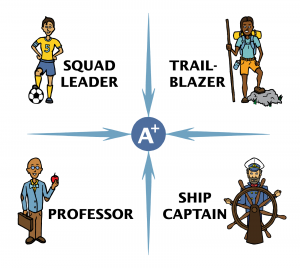Are you casual or intentional about maximizing agreements within your team culture? AGREEMENTS in your workplace and among your team are essential for a smooth-running business. They alleviate overwork, frustration, confusion, and so much more. But where do you begin?
Right where you are…

Agreements
Like all skills in entrepreneurial businesses, how to step up and utilize agreements (that unify the team, promote confident action in the workplace, and achieve strong results) is a learned process that takes practice. And the added challenge with agreement-making in business is that people don’t even realize it is a skill they need to strengthen.
What I have seen is that when strengthened, agreements quickly have a positive influence on team effectiveness—and therefore business results. In business today, the CEO and the team live and breathe change, both internally and externally, so agreements are rarely “made once and done.”
No matter your position in the company, you are confronted with new challenges (and continual change), you are undertaking new endeavors (which never go perfectly), and you are working with humans (with no two alike)!
Self-Assessment
Ask yourself, if consciously articulated (actually said out loud) or written agreements are needed in your business, in any or all of the four areas below. We would love to hear from you about your agreement-making wins and where you see room for improvement (comment below).
STEP ONE is critical!
Establish and mutually agree upon ROLES. Clarify each person’s role (be sure they’re part of the conversation). That’s the starting place. Clearly defined roles about who does what, especially in entrepreneurial businesses, aligns departments, tasks, and individual performance expectations right up front. I think you can see how clarifying roles, alone, prevent the CEO and the team from bouncing all over in chaos, overwhelm, and disorganization. Revisit roles on a regular basis to maximize efficiency.
STEP TWO is DELEGATION
This is one of the most common types of AGREEMENT. Simply put, this is where one person is requesting another person to take on a NEW responsibility to achieve a company outcome. The number one trap of delegation is delegating only a set of tasks without explaining the big picture, the end goal. Directing someone to simply do tasks (without complete information) puts them in a weak position to achieve the optimal result. WHY? Because:
1) they may not know what the end result looks like, or the outcome they are contributing to, or the context of why what they do even matters to achieve the outcome
2) they can only do exactly what you tell them since they have no other information
3) they cannot problem solve or recognize problems, so must rely on the delegator, not themself to identify problematic issues or to make improvements.
THE SOLUTION
Delegate and have clear, mutual AGREEMENT about the specific outcome you are going for—a shared vision of successful completion. DELEGATE OUTCOMES, then the person taking on the responsibility understands how their part relates to the whole—the purpose of the project—and the all-important outcome for the company (think strategic goal).
Remember, delegation is a two-way responsibility. The way you communicate (hand-off) what is to be accomplished (the purpose and outcome), supports the person that is actually doing the work. (Our delegation formula and scripts are very helpful to develop delegation skills: they are available in our Ace in the Hole 30-Day Self-Leadership Journal on Amazon.com)
STEP THREE is necessary…
This step is critical if you want team AGREEMENTS to actually work! And that is to provide a PSYCHOLOGICALLY SAFE working environment.
CEOs/leaders need to create a safe environment by fostering relations and modeling interactions that consistently demonstrate care, respect, appreciation of individual expertise, and personal/professional time constraints. In this type of culture, team members will then feel safe to speak openly and honestly, share differing opinions, disclose fears and feelings, offer novel ideas, and feel secure in changing their position as new information arises. To promote safety and secure working relationships, include these things:
1) Set clear and reasonable expectations
2) Provide necessary resources
3) Ask open-ended questions
4) Talk tentatively; express in ways that show your position is not fixed
5) Actively listen
6) Acknowledge facts, challenges and uncertainties
7) Meet feelings with empathy and compassion
8) Walk in their shoes
9) Express confidence in them
10) Show interest in their well-being
11) Repair tense situations ASAP and take responsibility for your part in any issue.
STEP FOUR is easier than you think!
It’s being willing to RENEGOTIATE AGREEMENTS when the current agreement is no longer effective.
The two main elements:
1) Change expectations
2) Discuss what plans/tasks/delegations need to change or be modified.
To renegotiate effectively, show respect for team members who have invested valuable time, skills, and mental and emotional energy. They can feel their work was for naught. Give them succinct, relevant, information to explain the need for renegotiation. Clear communication about how to get things back on track is what you both are going for—because you are united for the bigger business outcomes. This keeps renegotiation focused on results that are a win-win for the people involved and for the company!
Help participating team members understand the reason for renegotiating the agreement. Tell/show what’s changed and how that negatively impacts achieving the original goals/agreement!
1) Here’s what’s changed (why it’s not working)
2) Here’s what’s changed on my side (situation or new awareness)
3) Now I’m thinking we could do “y” instead of “x” (proactive problem solving suggestions). Invite and listen to their input, then together, renegotiate your agreement and go for the win!
Think about today
Where is there a need for an “agreement that is in plain sight?” How would agreements (in areas you identify) benefit team members and the company? After giving it some thought…take action.
Lastly, agreements need recovery plans, but that’s a lesson for another day!
Contact us anytime, when you feel the need for further information and guidance.
Agreements in action—ignite results!
-Annie










